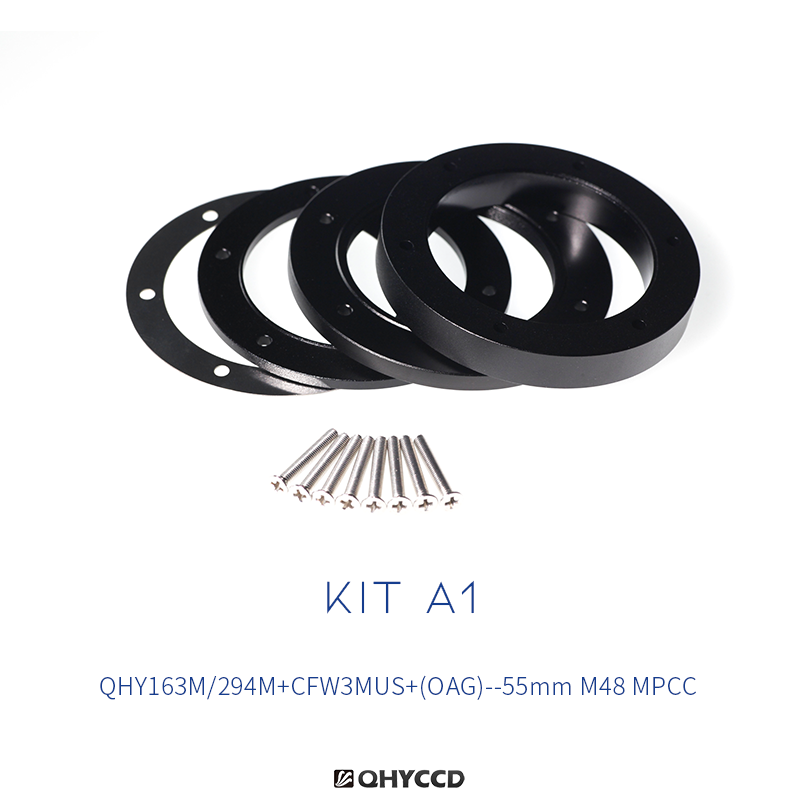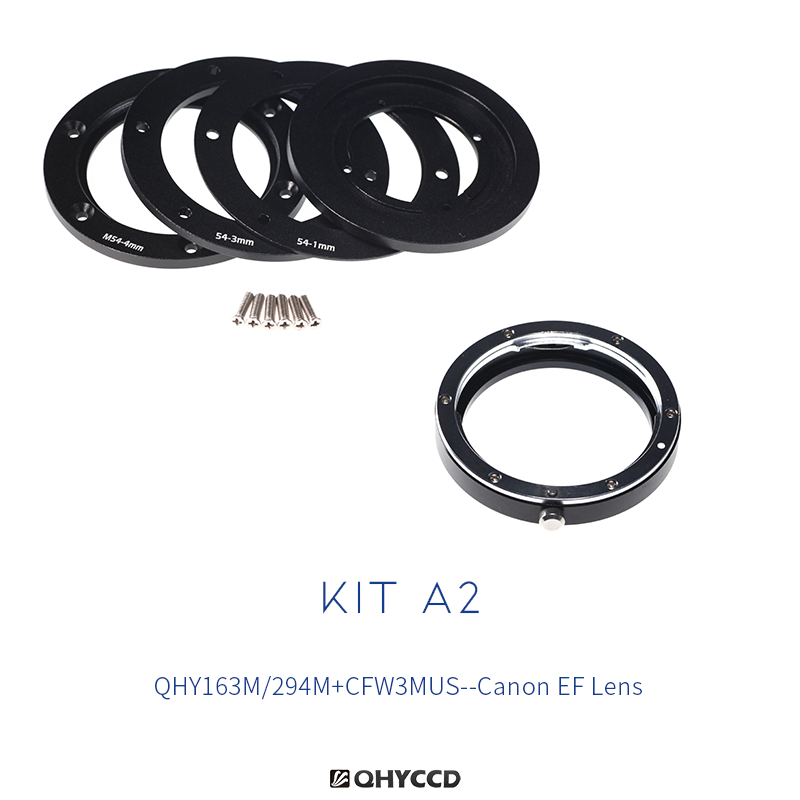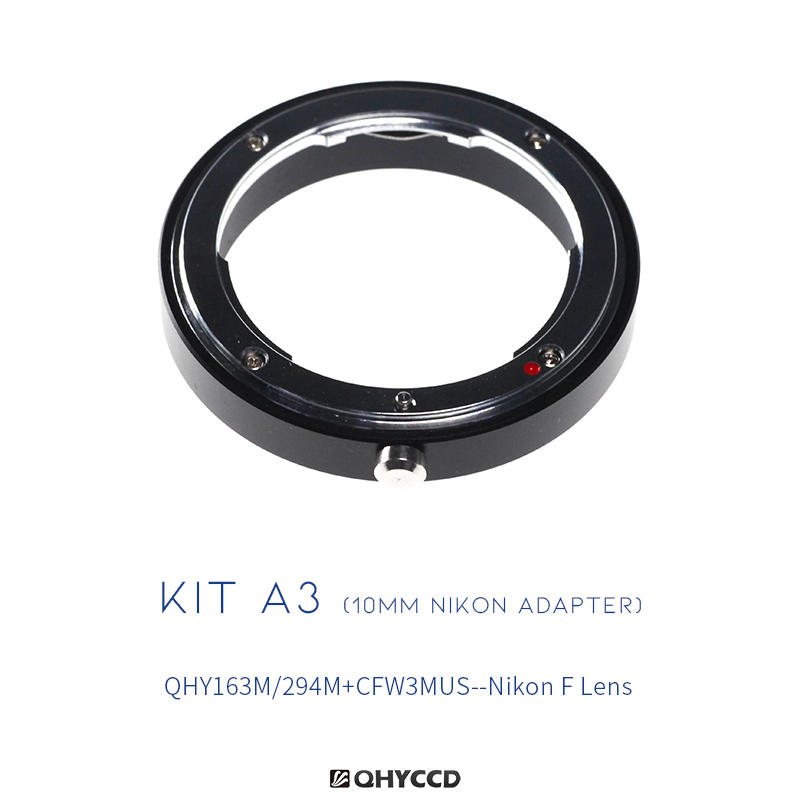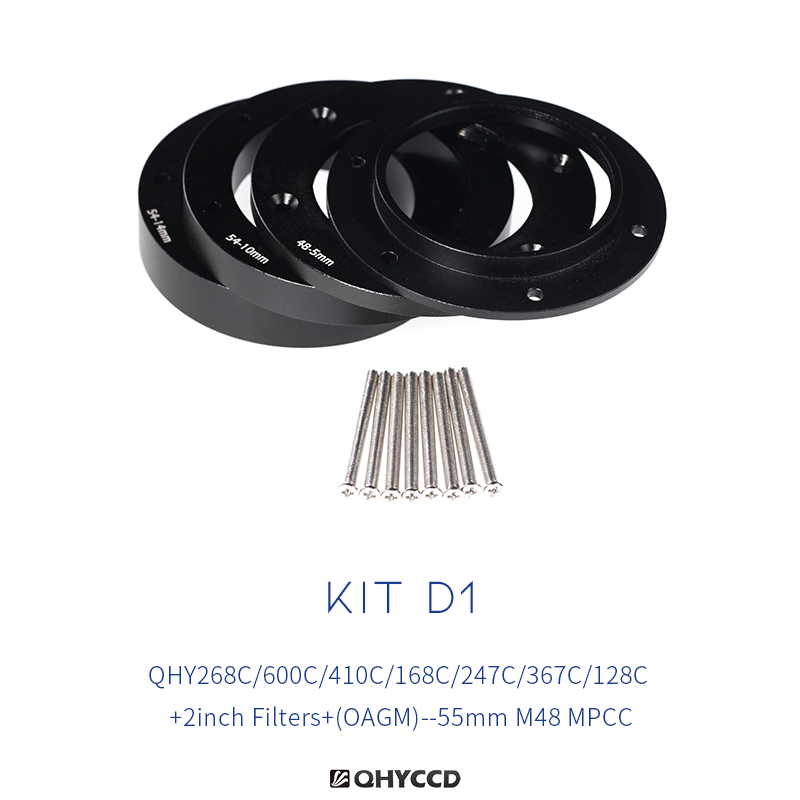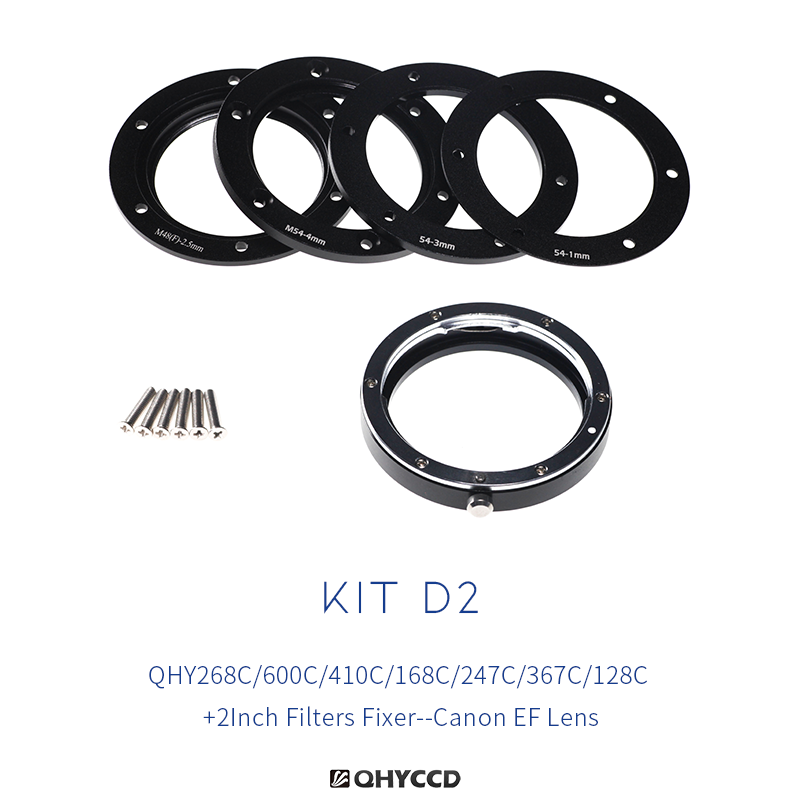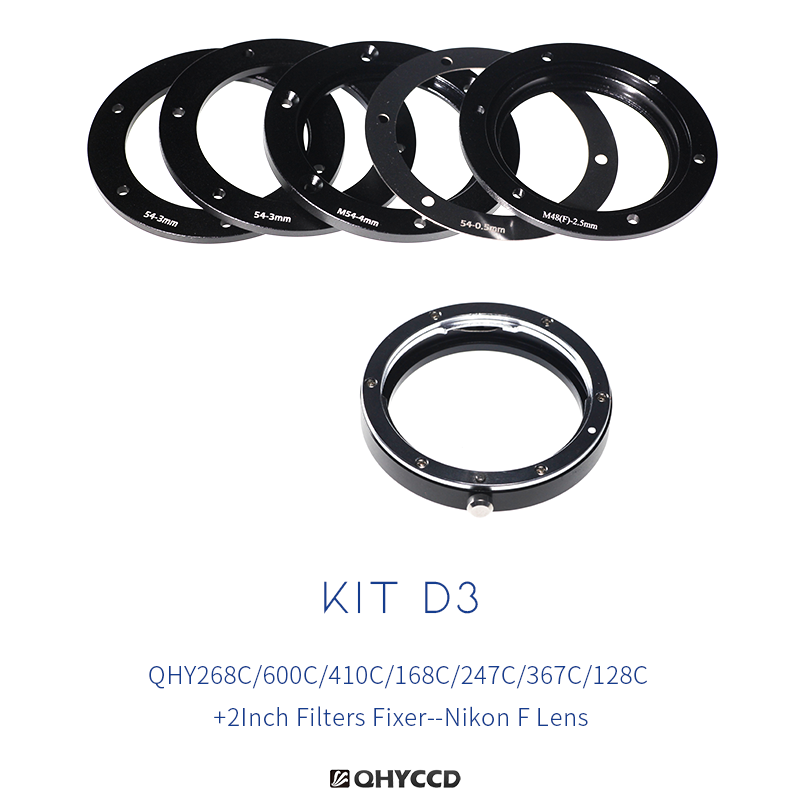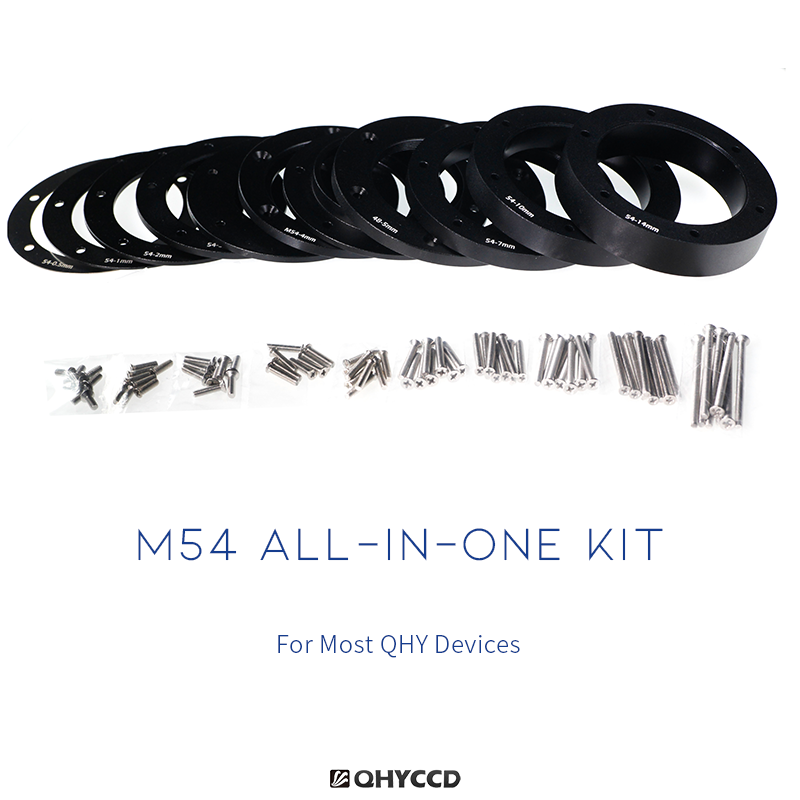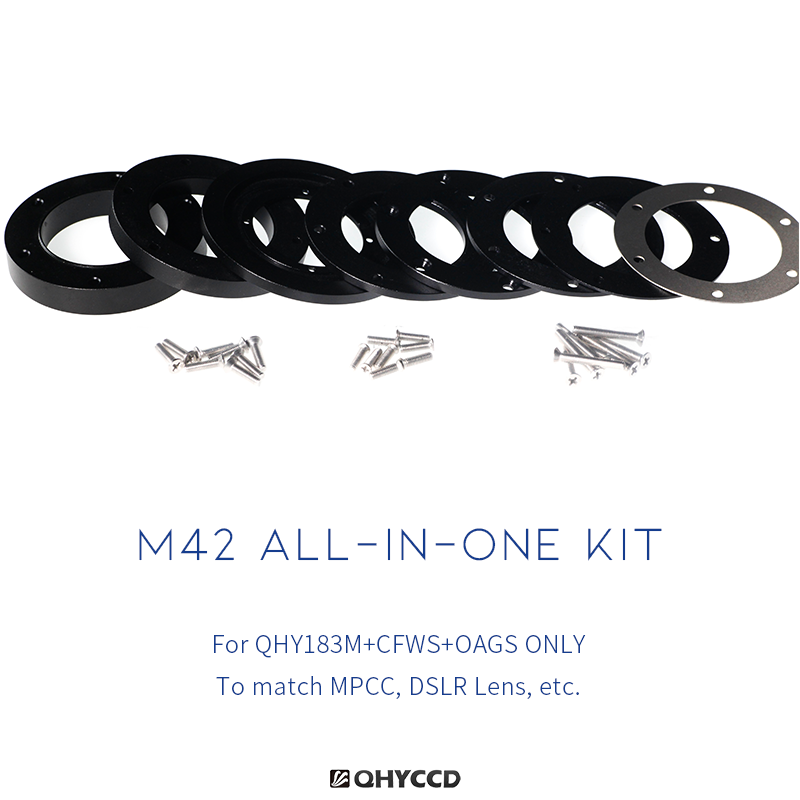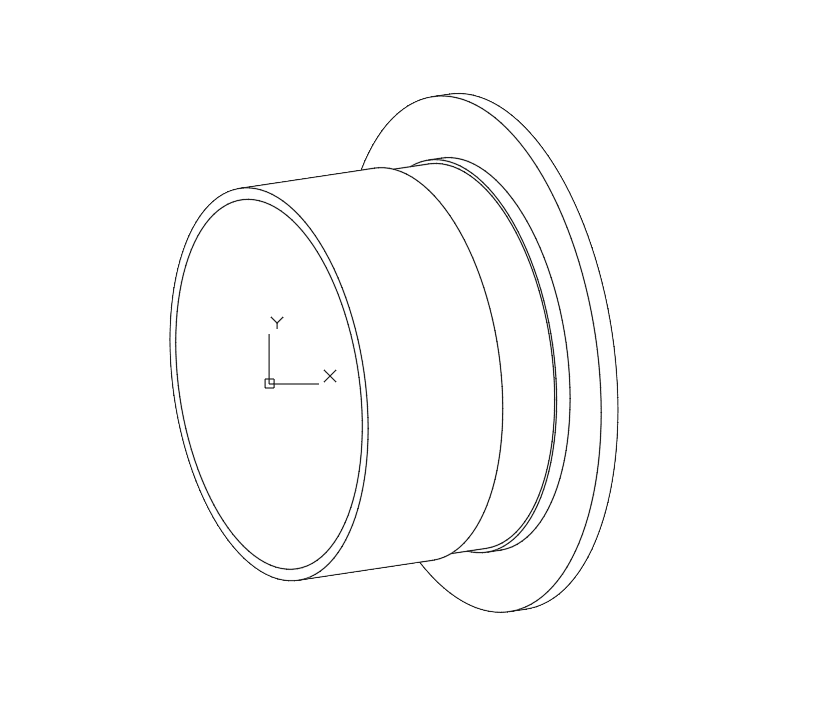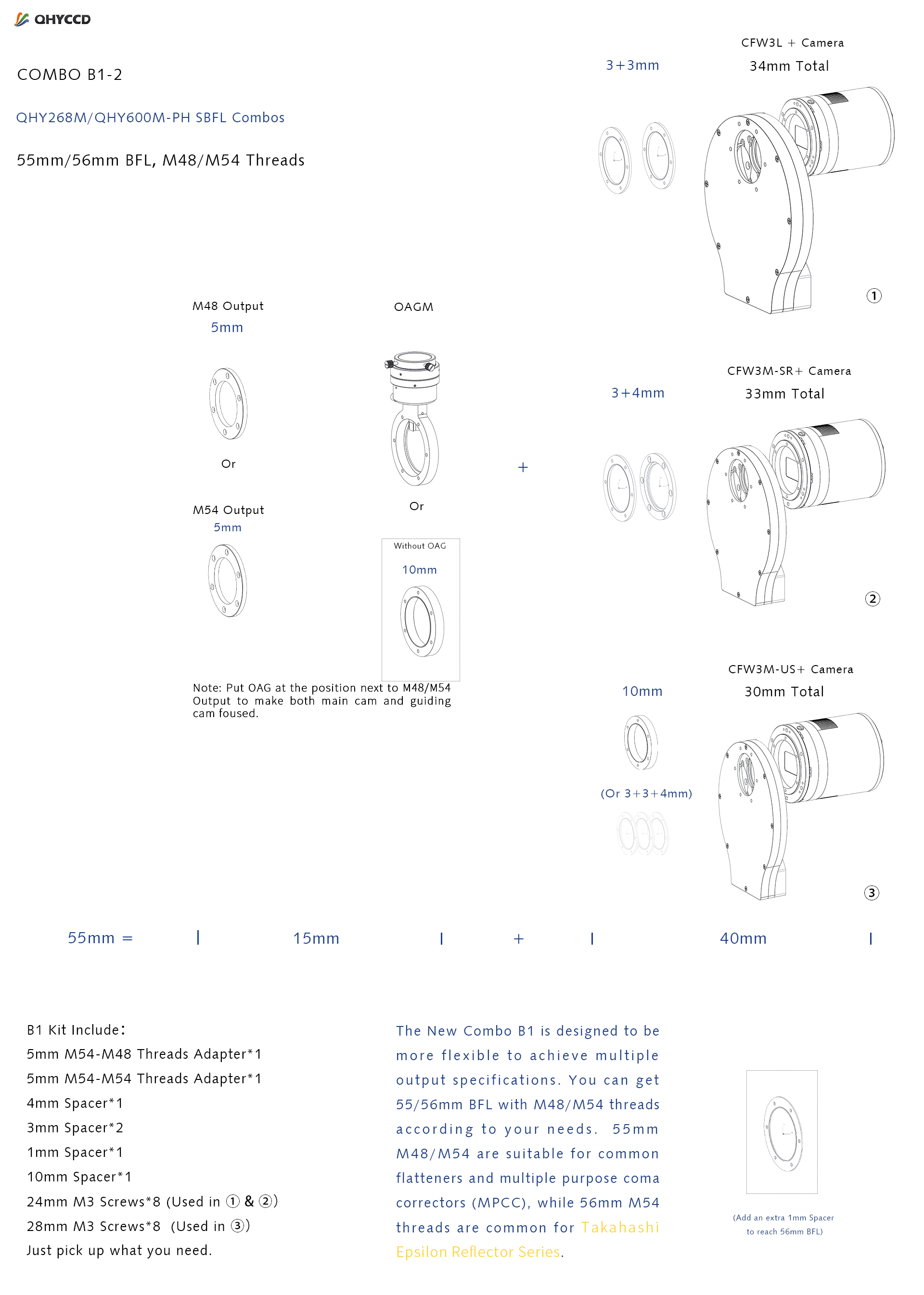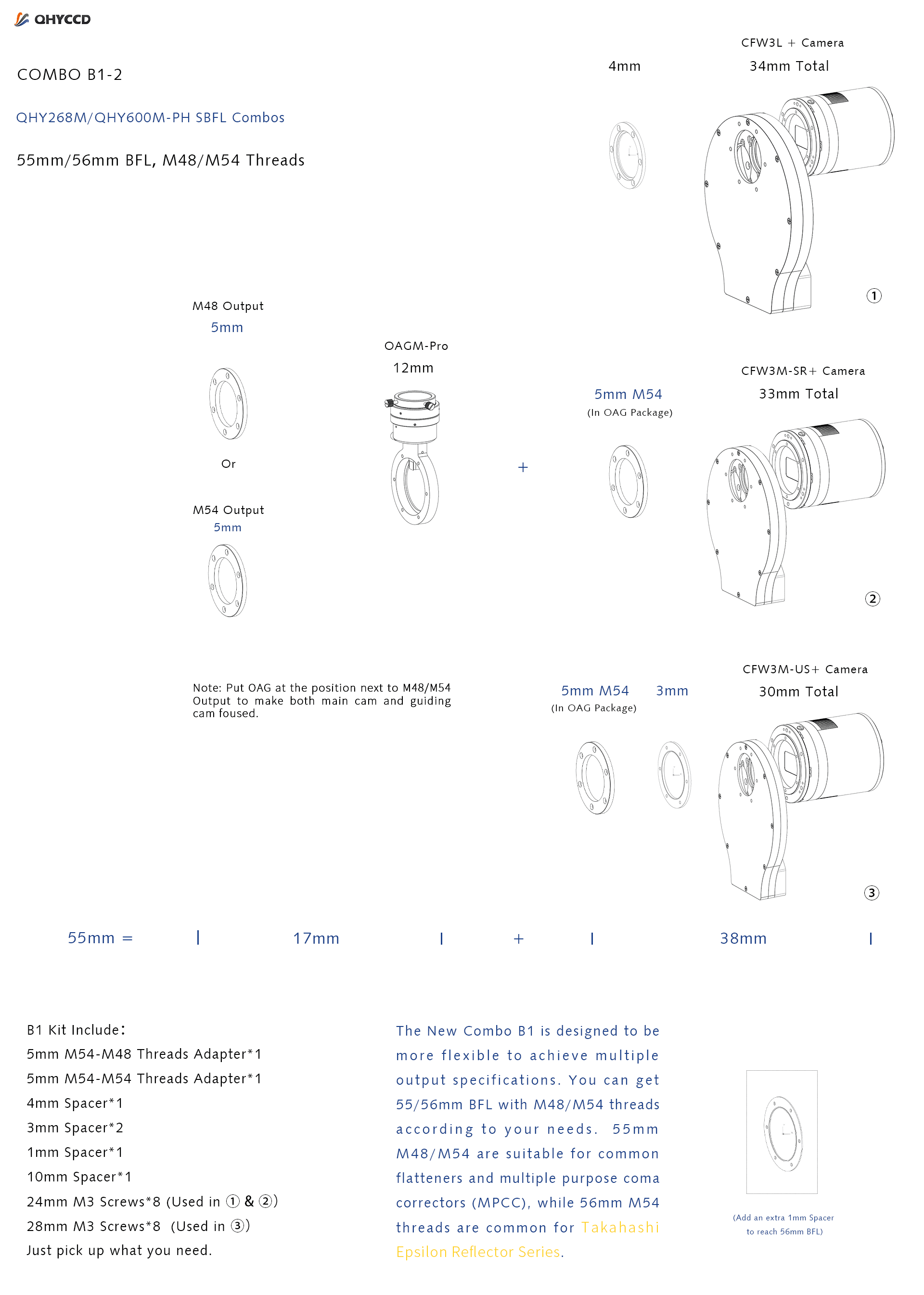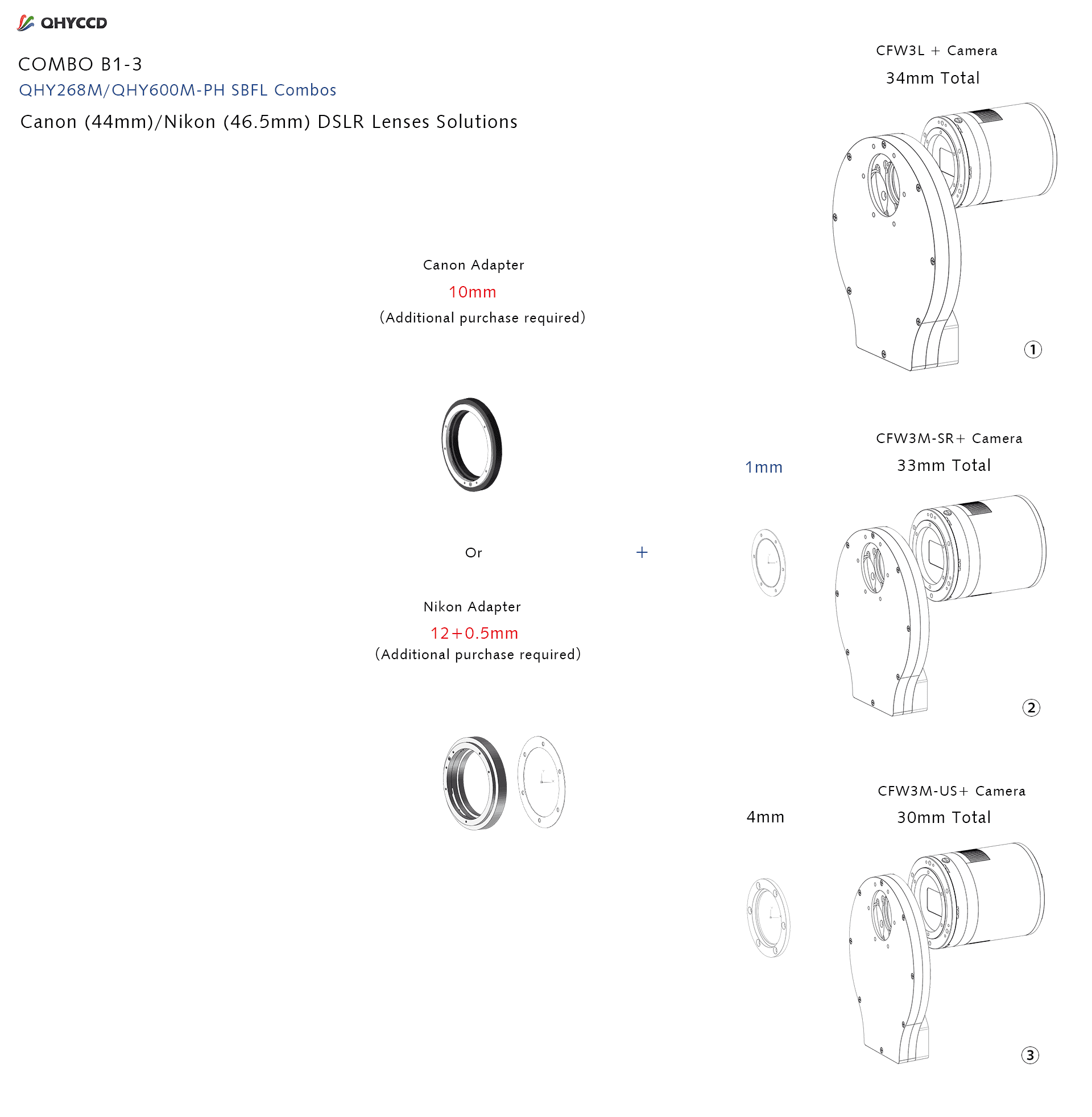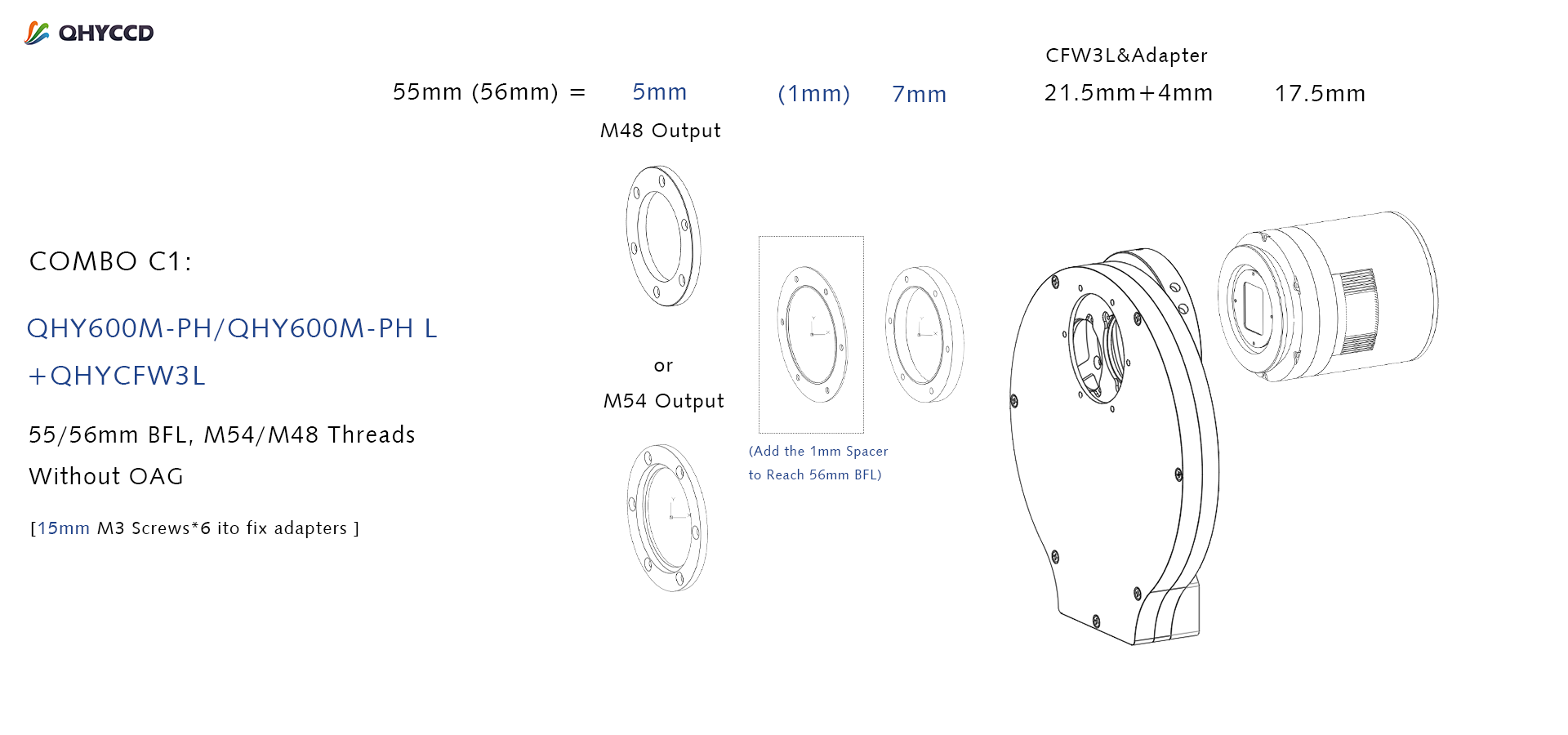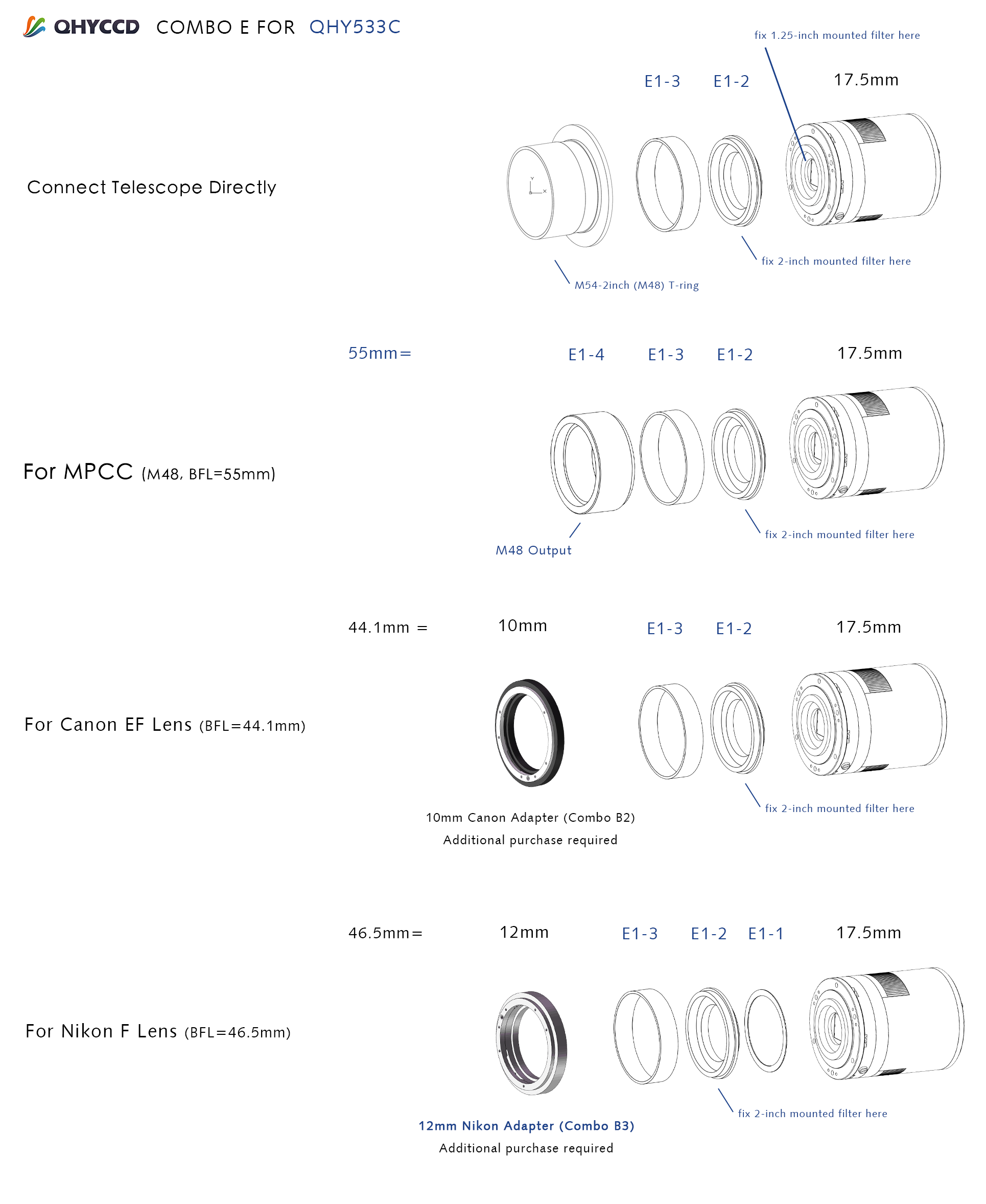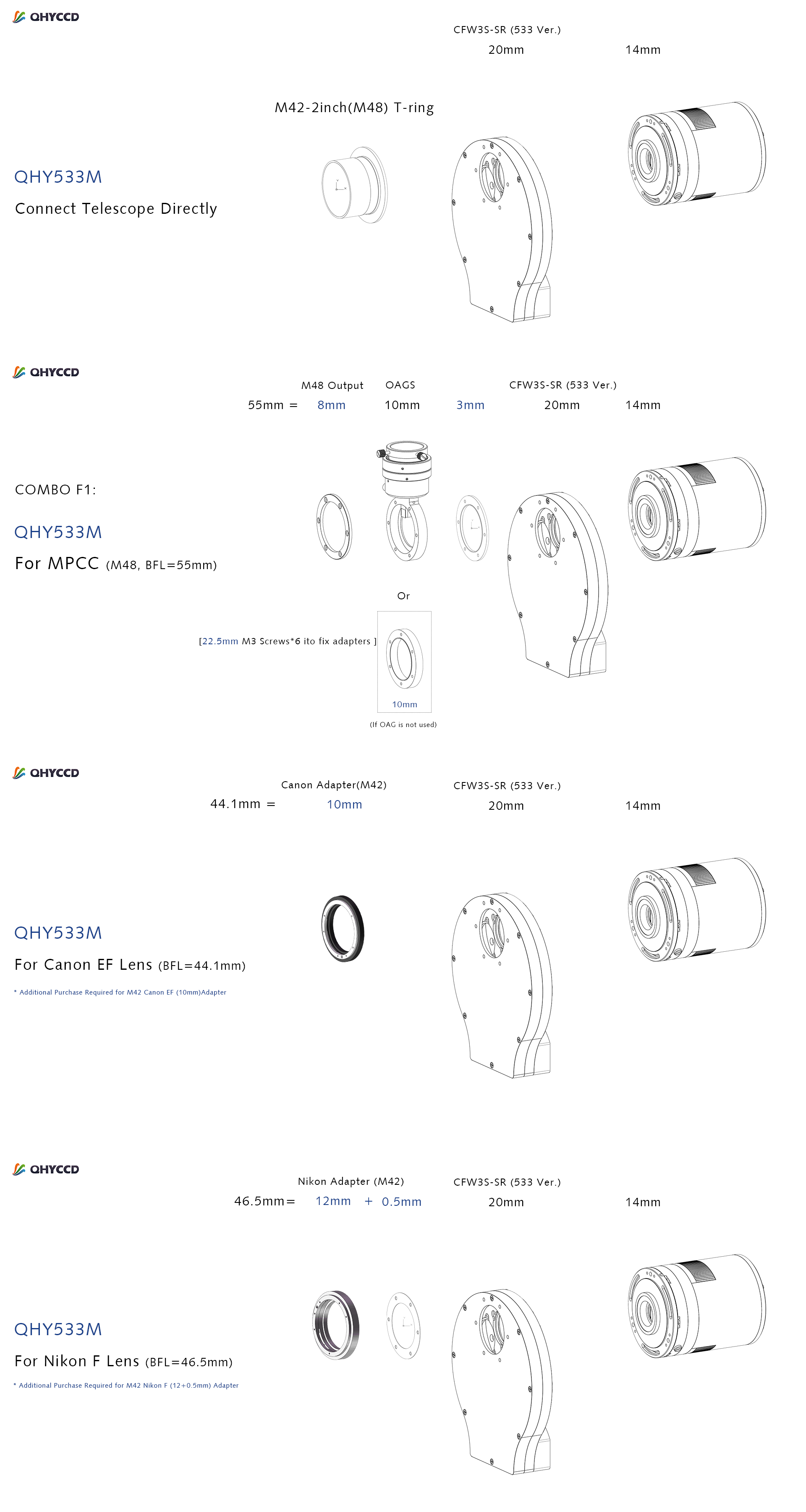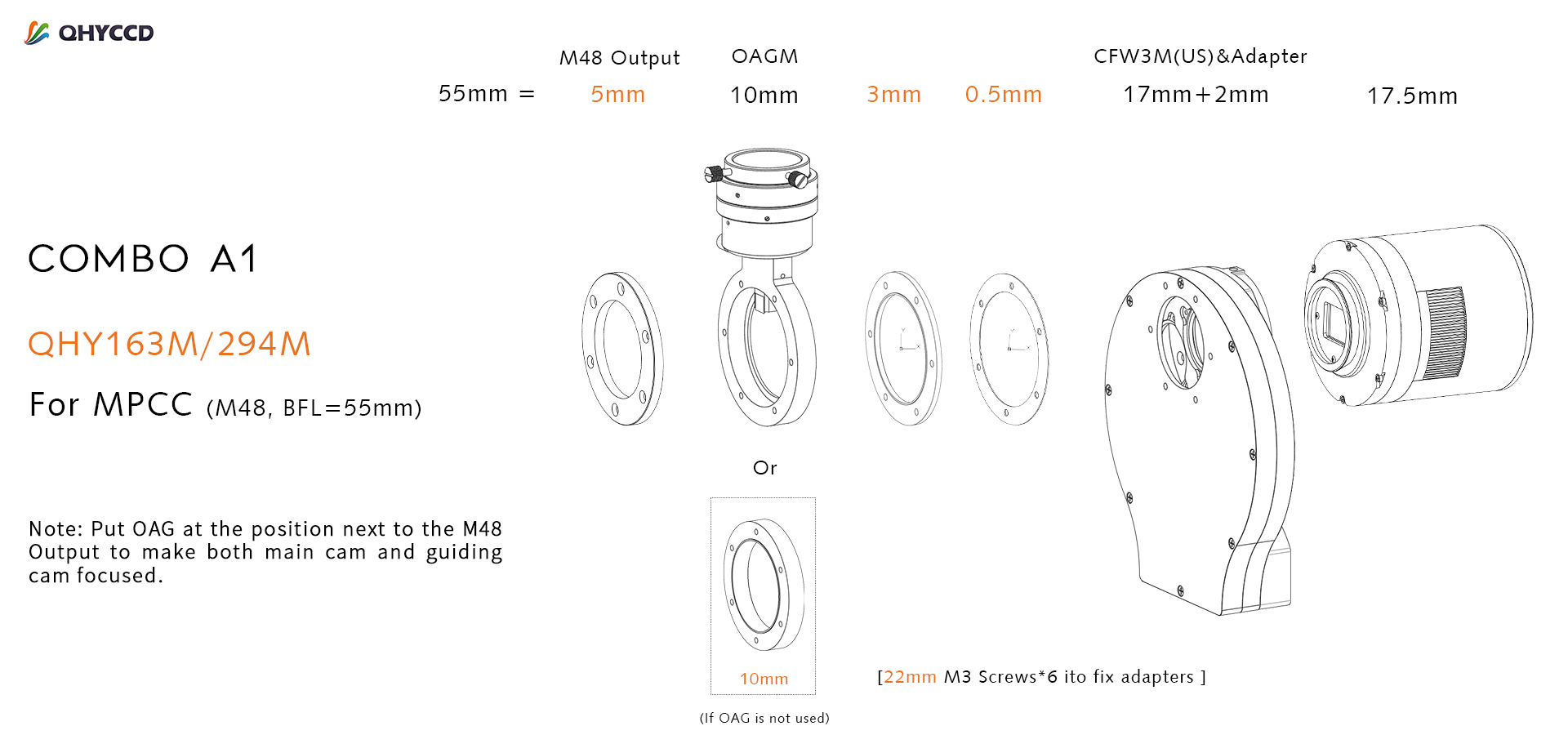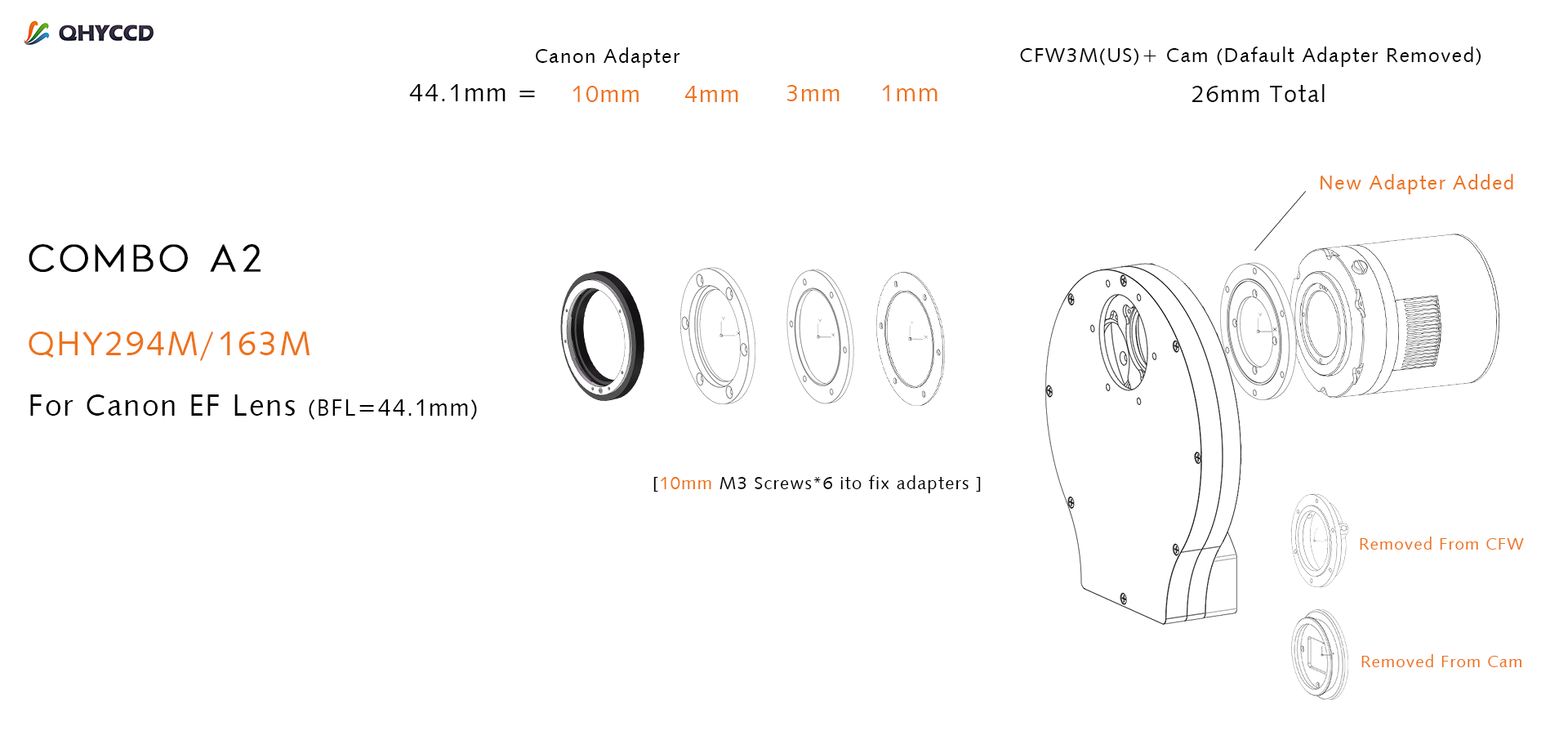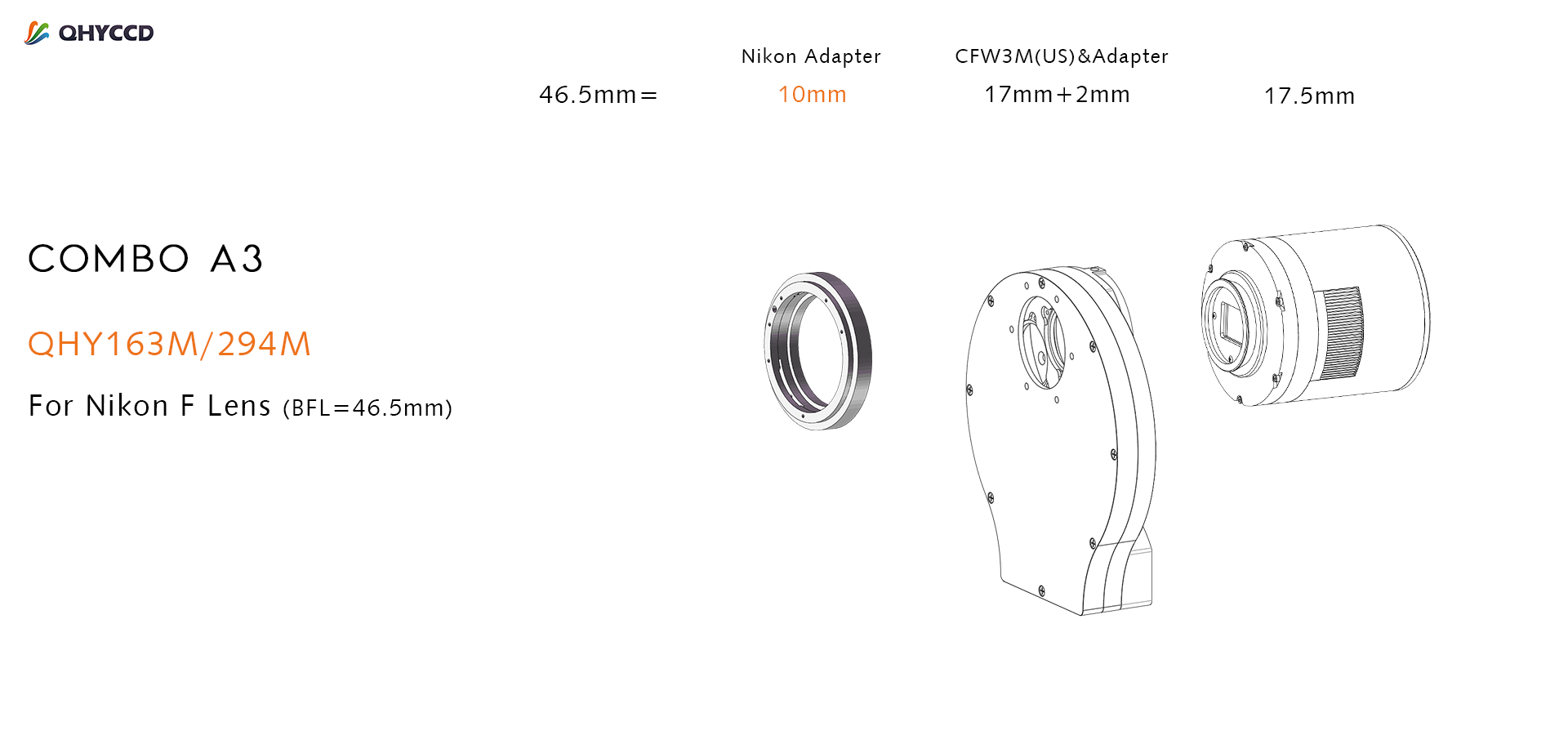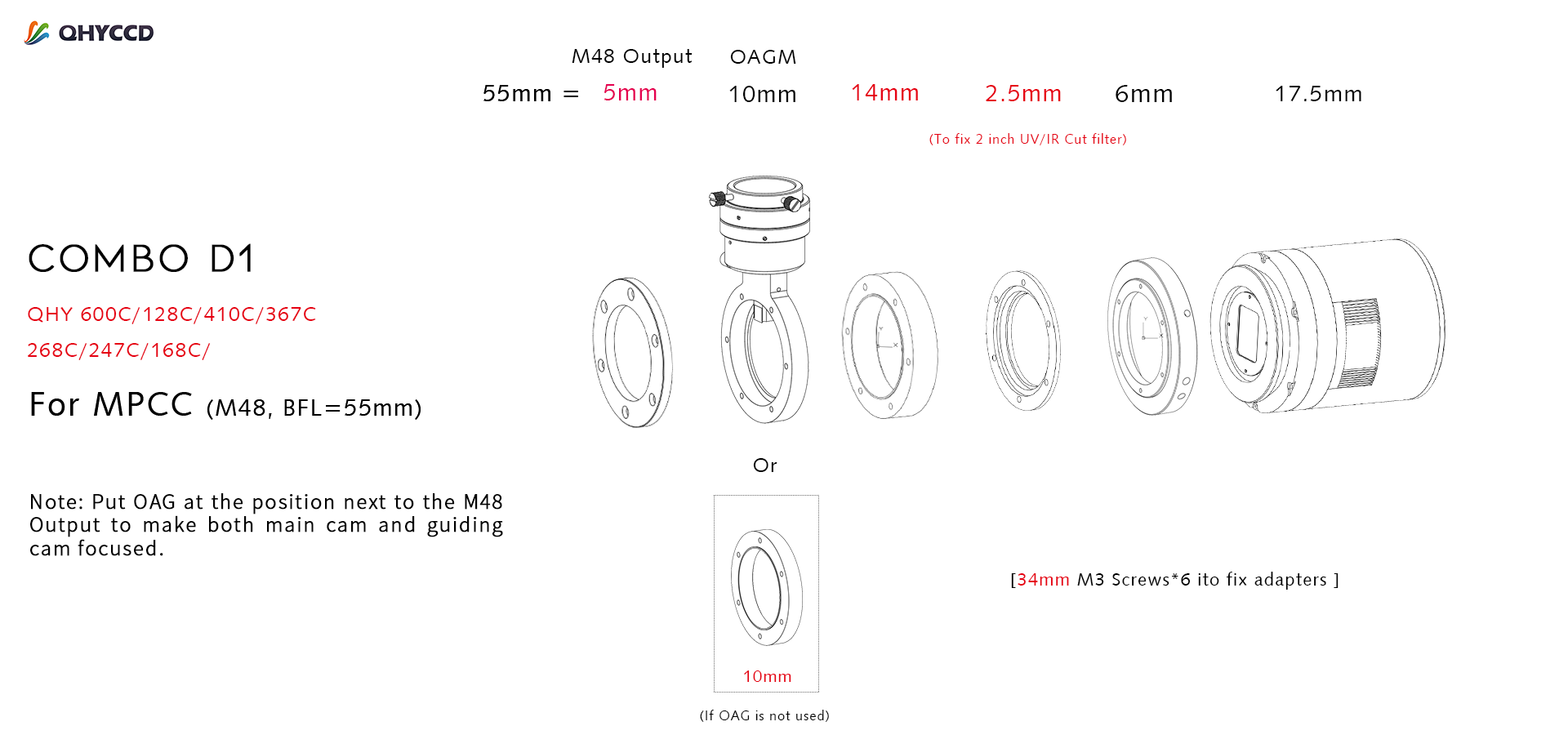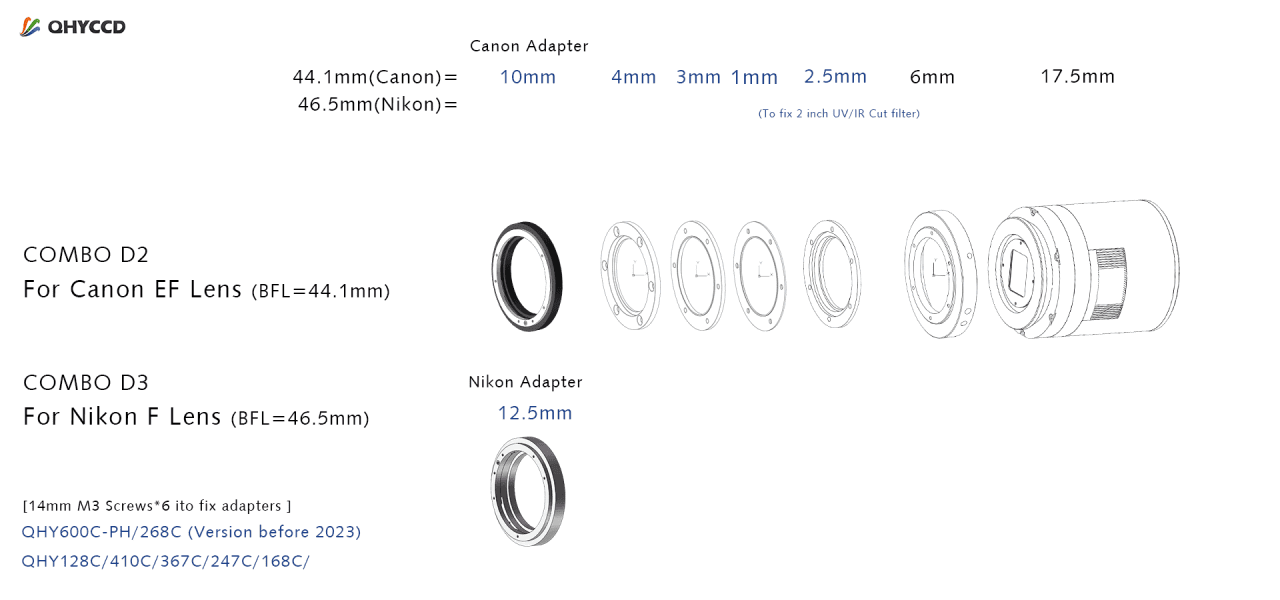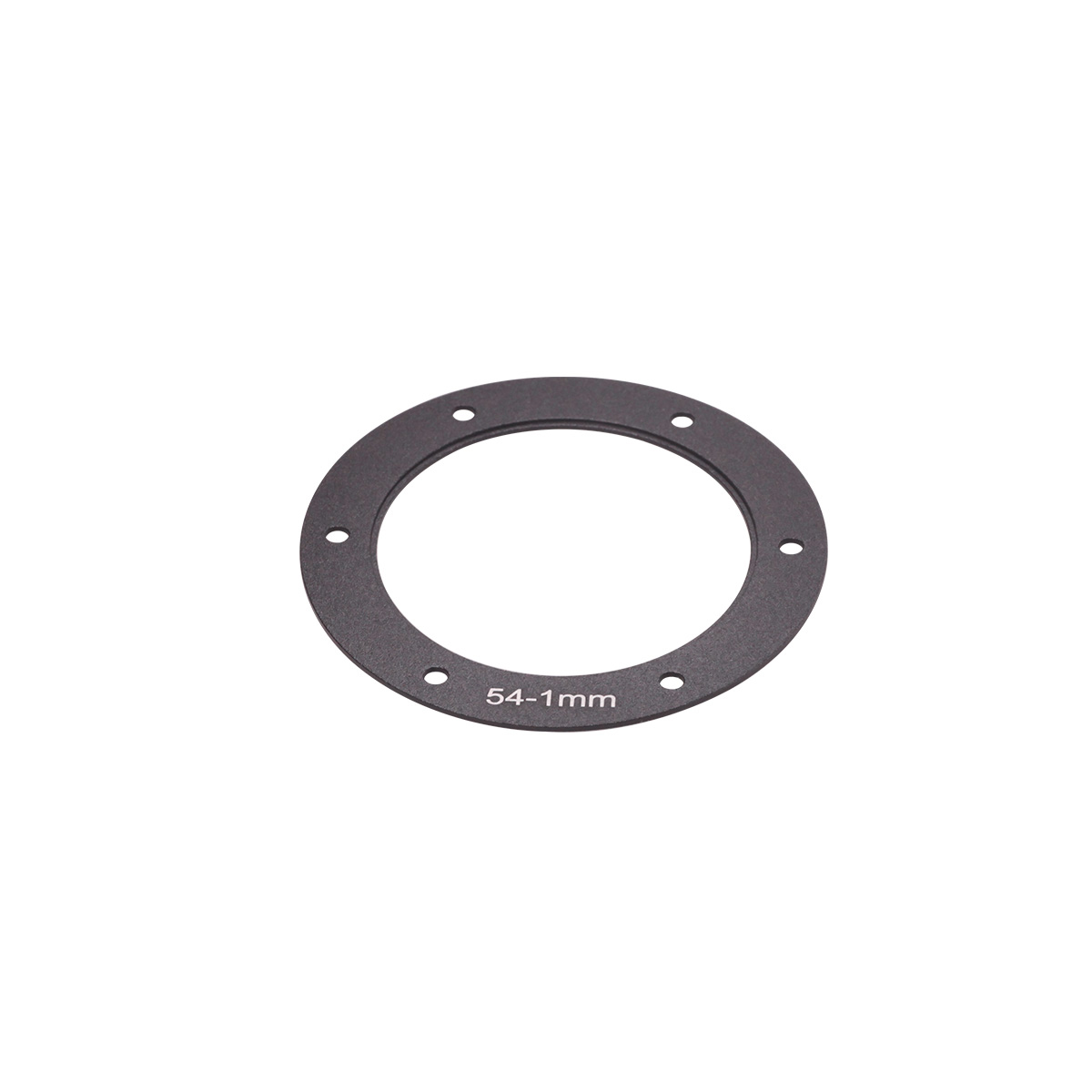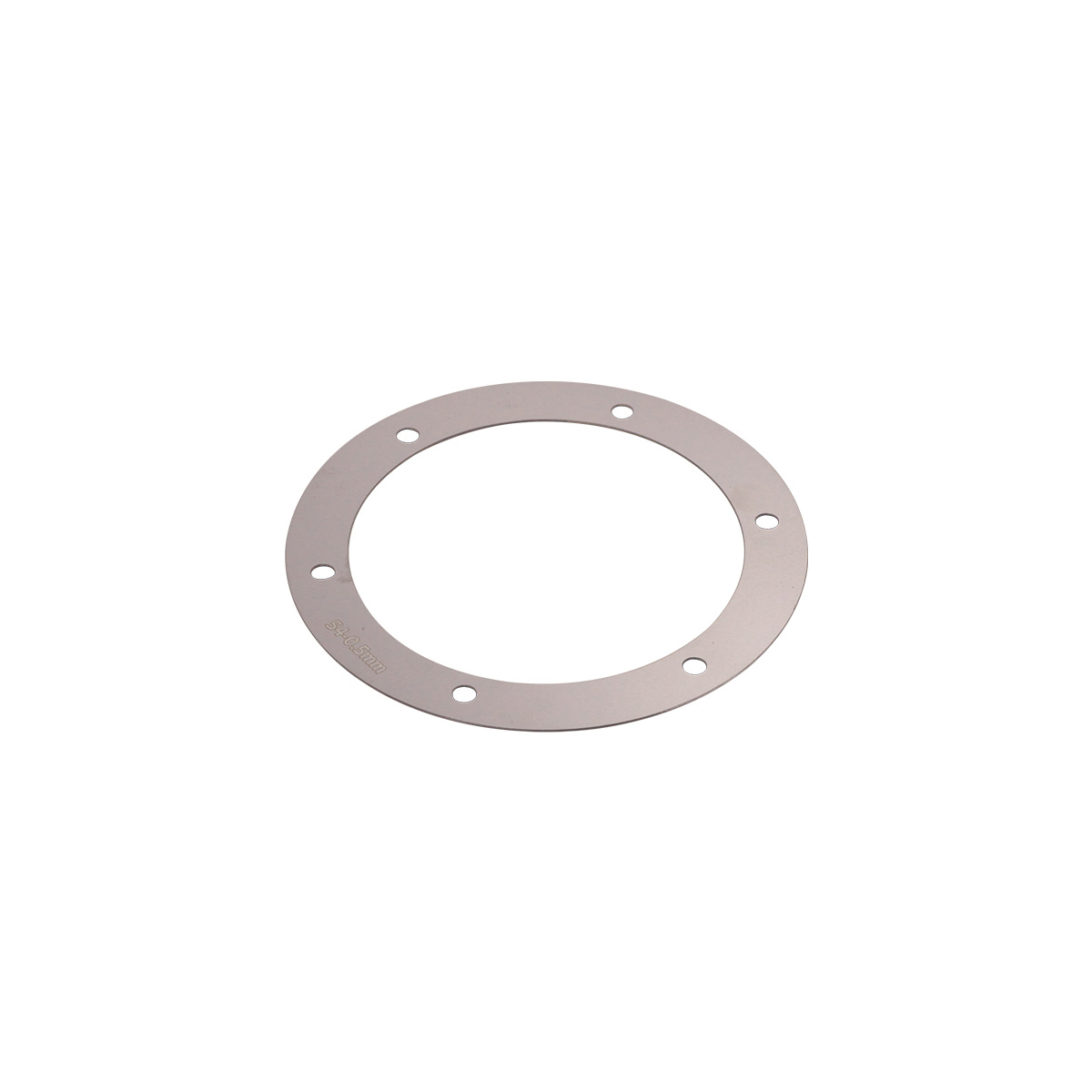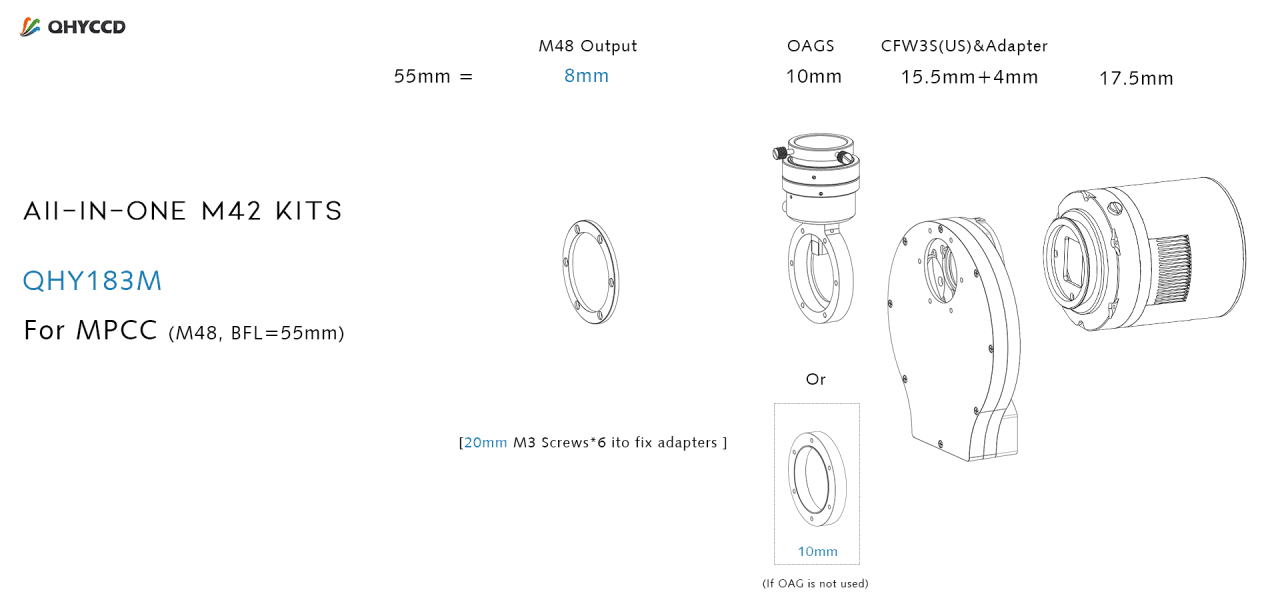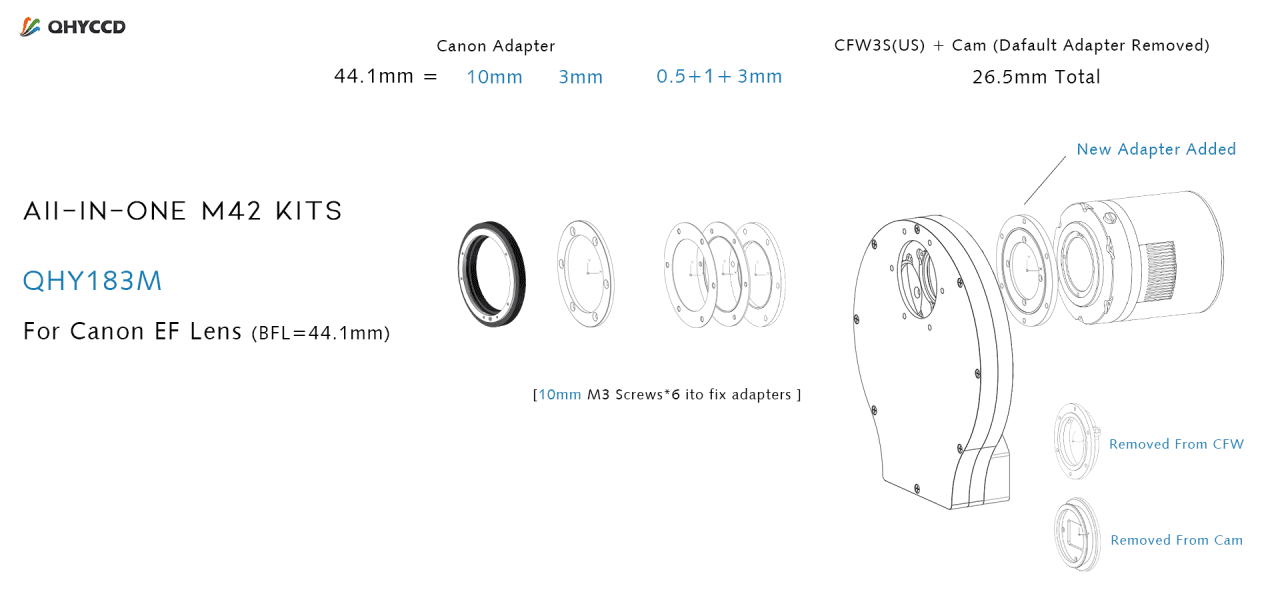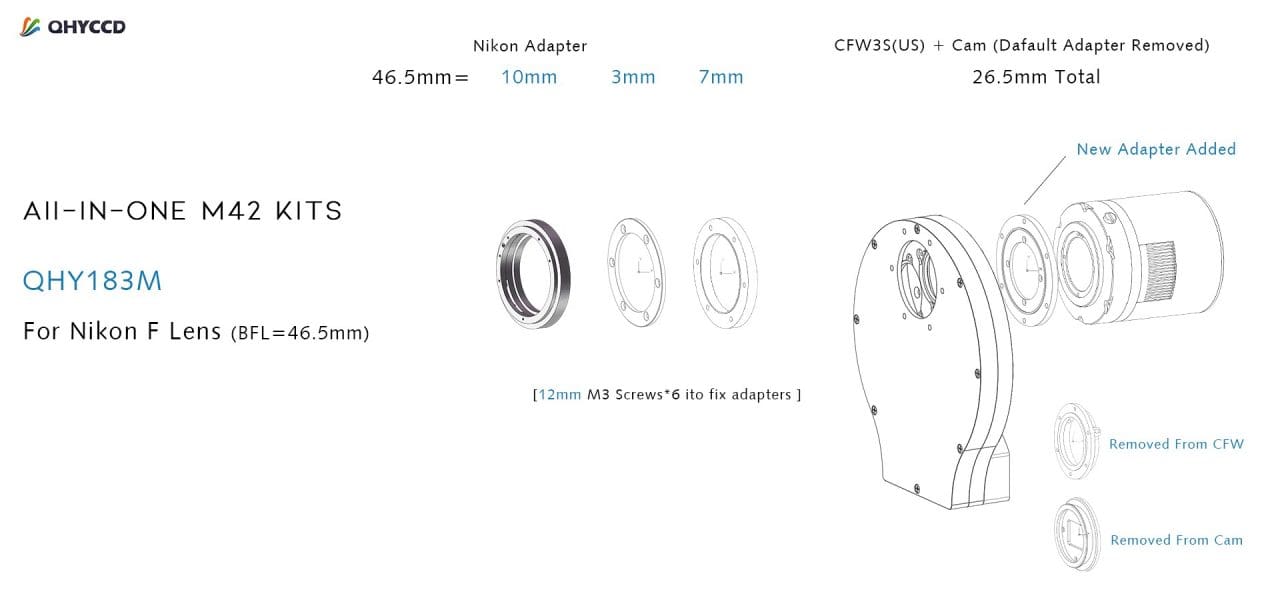QHYCCD has adhered to the adapter system of 6-screw + spacers for years. Compared to the typical threaded connection, this method is more robust, ensuring a stable relative position between various components (threads often have errors, leading to the final position after fixation being inaccurate). At the same time, it facilitates fine-tuning of the back focus length.
QHYCCD has consistently aimed to enhance the stability and user-friendliness of its hardware products. In terms of adapter systems, we have been continuously optimizing to adapt to the evolving needs of users, striving to improve the user experience.
Adapter System V1.0:
For the Adapter System V1.0 (before 2020), we provided various thicknesses of spacers for users to choose and purchase freely. However, for users, especially beginners, calculating the back focus and selecting the appropriate spacer can be challenging, and the tuning process is complex. Therefore, we introduced the 2.0 version.
Adapter Syatem V2.0:
In the Adapter System V2.0 (from 2021 onwards), we adopted standardized adapter kits. Various adapter kits can meet the needs of most mainstream requirements (such as correctors for 55mm/56mm back focus M48/M54 interfaces, Canon/Nikon DSLR lenses, etc.), with the adapter kit of 55mm M48 output serving as the standard accessory for most cooled cameras. Users can choose the corresponding adapter kits according to their needs, and install them following the adapter kit instruction, without the need for self-measurement and matching.
Adapter System V2.5:
Building upon the V2.0, the current V2.5 (since 2023) further enhances the compatibility and expandability of the adapters.
a. The standard adapter kits B1/C1/G1 for mainstream products have been expanded. While the V2.0 only supported adaptation to the 55mm/M48 specifications, the V2.5 offers cross-compatibility for both 55mm/56mm back focus length and M48/M54 threads. This allows coverage for back focus length and interface diameter requirements of most optical components such as correctors and telescopes.
b. By widening compatibility between different specifications, the current standard items can now facilitate connections and back focus length adaptations for some unofficially recommended combinations, such as achieving a connection between OAGL-Pro and CFW3M using the adapters.
c. Besides, 0.5mm/1mm spacers have been added as independent products to meet the needs of a few users with extremely high requirements for back focus length.


